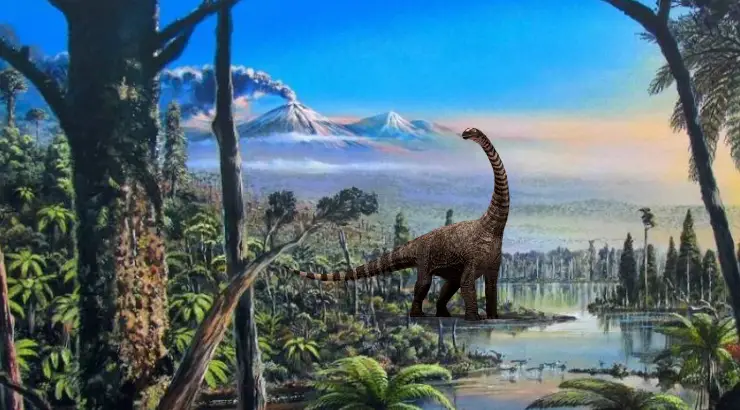Ancient History
New Evidence Reveals Antarctica Was a Swampy Rainforest Full of Dinosaurs 90 Million Years Ago
A new study paints a picture of a very different prehistoric Antarctica, one that was warmer and teeming with life.

(TMU) — Antarctica has always tantalized researchers and scientists with its mysterious ice-covered lands.
A newly published study about the climate of the mid-Cretaceous period is adding stunning new questions to the mix as researchers claim to have discovered evidence of a 90-million-year-old temperate rainforest that once existed in the South Pole region. The study paints a picture of a very different prehistoric Antarctica, one that was much warmer and teeming with life.
An international team of geoscience researchers acquired their evidence while aboard the research icebreaker RV Polarstern in the Amundsen Sea near the Pine Island Glacier. Their drill rig descended to ocean depths of 3,300 feet and then penetrated through to 90 feet beneath the seafloor to extract a perfectly preserved sample of forest soil with a sediment core composed of fine-grained silt and clay.
In their paper, recently published in Nature, the scientists wrote:
“A sedimentary sequence recovered from the West Antarctic shelf—the southernmost Cretaceous record reported so far—and show that a temperate lowland rainforest environment existed at a palaeolatitude of about 82° S during the Turonian–Santonian age (92 to 83 million years ago).”
A CT scan of the dark-brownish gray soil revealed densely packed fossil roots, pollen, and spores of at least 65 types of vegetation including conifers, ferns, and flowering plants. No animal fossils were recovered but the soil was dated to about 90 million years ago, which was the golden age of the dinosaurs. With average annual temperatures of about 53-55 degrees Fahrenheit (12-13 Celsius)—68-77 Fahrenheit (20-25 Celsius) during the warmest summer months—scientists say this region, 560 miles from the South Pole, would have been a swampy rainforest full of dinosaurs, flying pterosaurs, and insects.
“The preservation of this 90-million-year-old forest is exceptional, but even more surprising is the world it reveals,” said the study’s co-author Professor Tina van de Flierdt, from the Department of Earth Science & Engineering at Imperial. “Even during months of darkness, swampy temperate rainforests were able to grow close to the South Pole, revealing an even warmer climate than we expected.”
The region would have been like an entirely different world from the frigid, glacier-encrusted South Pole we see today. Despite the region experiencing an annual four-month polar night, marine geologist Johann Klages of the Alfred Wegener Institute’s Helmholtz Center for Polar and Marine Research in Germany says the estimated temperatures would be analogous to modern-day New York City.
Other scientists compared the temps to those found in New Zealand. The annual mean air temperature was only two degrees warmer than contemporary Germany. River and swamp water would have reached up to 20 degrees Celsius and annual rainfall volume was equal to contemporary Wales.
The study also has ramifications for climate research as the work suggests much higher atmospheric carbon dioxide (CO2) levels than previous climate models showed for the mid-Cretaceous period.
In addition to the stunning revelation of dense vegetation and flourishing life in pre-historic Antarctica, the research provides a new window into how climate conditions and CO2 levels dramatically shape life on Earth.
By Jake Anderson | Creative Commons | TheMindUnleashed.com
Typos, corrections and/or news tips? Email us at Contact@TheMindUnleashed.com
